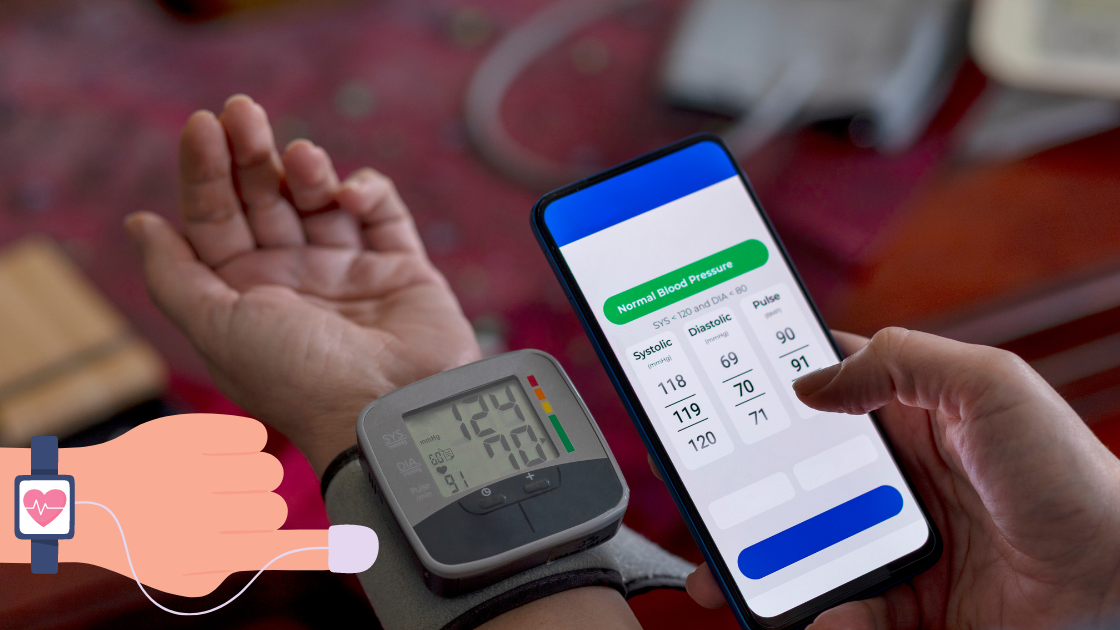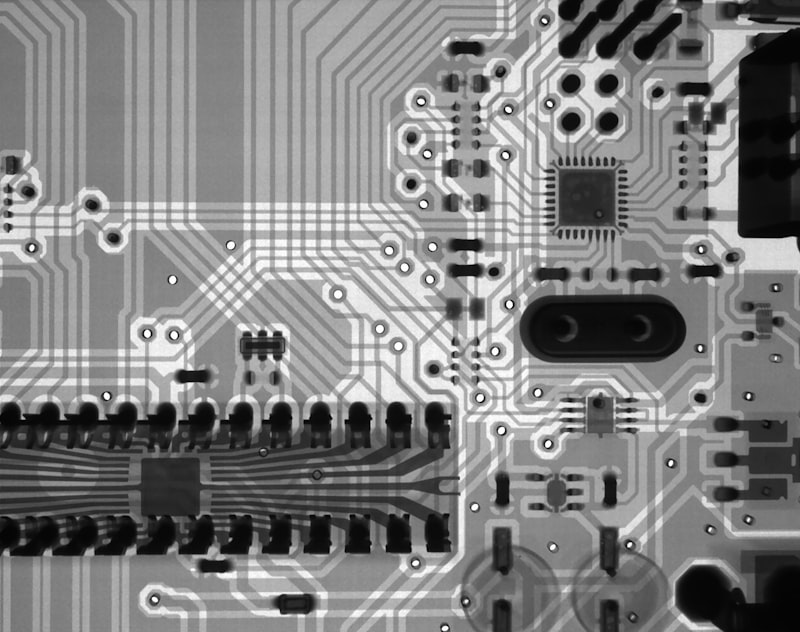What Are the Latest Trends in Wearable Technology?
One of the hottest trends right now is wearable health monitors. These devices go beyond counting steps; they track your heart rate, monitor sleep patterns, and even offer stress management tips. It’s like having a personal wellness coach right on your wrist, nudging you towards a healthier lifestyle.
Another game-changer is smart clothing. Yes, you read that right – clothes that can do more than cover you up. Think of jackets that adjust their temperature based on the weather, or sports gear that measures your performance in real-time. It’s clothing that’s as dynamic as you are, responding to your needs effortlessly.
But it doesn’t stop there. Augmented reality (AR) glasses are making a comeback, this time with a focus on practicality. Imagine strolling down the street and getting real-time directions layered over what you see, or trying on virtual outfits before making a purchase. AR glasses are set to revolutionize how we interact with our surroundings.
And let’s not forget about smart jewelry. These pieces blend fashion with function, offering discreet notifications or even doubling up as emergency alert systems. It’s jewelry that keeps you connected without sacrificing style.
In a world where technology is advancing at lightning speed, wearable tech stands out for its seamless integration into everyday life. Whether you’re a fitness enthusiast, a fashionista, or simply tech-curious, there’s a wearable gadget out there waiting to amaze you.
From Health Monitoring to Personal Safety: Exploring the Evolving Functions of Wearable Devices

Imagine having a device on your wrist that not only tracks your heart rate and steps but also alerts emergency services when you’re in trouble. That’s the reality with today’s wearable technology. It’s like having a personal assistant that cares deeply about your well-being, always ready to jump into action when needed.
Health monitoring was the initial breakthrough for wearables, allowing individuals to track their fitness goals with precision. Whether it’s measuring calories burned during a workout or monitoring sleep patterns, these devices provide insightful data to help users make informed decisions about their health.
But the evolution doesn’t stop there. Wearable devices are now integrating advanced sensors and algorithms to detect falls, abnormal heart rates, or even potential dangers in the environment. They act as proactive guardians, sending alerts to both the wearer and designated contacts in case of emergencies.
Take, for instance, the seamless integration of GPS technology in smartwatches. It not only helps in mapping your running routes but also serves as a safety net by pinpointing your location in real-time. For outdoor enthusiasts or elderly individuals living independently, this feature can be life-saving.
Moreover, the ability to sync these devices with smartphones has enhanced their functionality even further. You can now receive notifications directly on your wearable, from urgent weather alerts to reminders for medication intake, keeping you connected and informed throughout the day.
Wearable devices have evolved beyond simple health trackers to become indispensable tools for personal safety and well-being. They blend technology seamlessly into our lives, offering a sense of security and empowerment. As these devices continue to innovate, one can only wonder what the future holds for wearable technology and its impact on our daily routines.
Fashion Meets Function: How Wearable Technology Is Redefining Style and Utility
Wearable technology has revolutionized the way we perceive our clothing. It’s no longer just about how an outfit looks; it’s about what it can do for you. From smartwatches that track your steps and monitor your heart rate to clothing embedded with sensors that adjust to your body temperature, the possibilities are endless.
One of the most exciting aspects of wearable tech is its ability to seamlessly integrate into our daily lives without sacrificing style. Gone are the days of bulky gadgets that clash with your wardrobe. Today, designers are creating pieces that not only serve a purpose but also make a fashion statement.
Take, for example, smart jewelry that doubles as a notification device. These elegant pieces can discreetly alert you to messages and calls without interrupting your style. They blend seamlessly with both casual and formal attire, proving that technology can be both functional and fashionable.
Another area where wearable tech shines is in fitness and health monitoring. Imagine wearing a sleek fitness tracker that not only counts your steps but also analyzes your sleep patterns and provides personalized health insights. These devices empower you to take control of your well-being while complementing your personal style.
Moreover, wearable technology is pushing boundaries in sustainability. Innovations such as fabric made from recycled materials or garments that can adapt to different weather conditions are not only practical but also environmentally conscious choices. It’s fashion with a purpose, making a positive impact on both individuals and the planet.
The Rise of AI Integration: How Artificial Intelligence is Revolutionizing Wearable Gadgets
AI has fundamentally transformed wearable gadgets by making them smarter and more intuitive. Gone are the days of simple calorie counters and basic sleep trackers. Today, AI algorithms can interpret complex data patterns from sensors to provide real-time insights into our health and well-being. Whether you’re monitoring your fitness goals or managing chronic conditions, AI-powered wearables offer a level of personalized feedback that was once unimaginable.
Consider the scenario of a smartwatch that not only tracks your physical activity but also learns your exercise habits over time. It can suggest workout routines based on your fitness level and performance history, acting like a personal trainer on your wrist. This level of customization and adaptability is the essence of AI integration in wearables—it’s like having a fitness expert with you 24/7, guiding you towards your goals.
Moreover, AI extends beyond fitness into areas like healthcare and productivity. Wearable devices equipped with AI can monitor vital signs, detect abnormalities, and alert medical professionals in case of emergencies. This capability not only enhances personal health monitoring but also revolutionizes patient care by enabling proactive interventions based on real-time data.
In the realm of productivity, AI-powered wearables can streamline daily tasks by predicting your schedule, providing reminders, and even automating routine activities. Imagine a smart earpiece that translates languages in real-time or augmented reality glasses that overlay useful information onto your surroundings. These innovations make life easier and more efficient, blurring the line between human capability and technological enhancement.
Beyond Fitness Trackers: Innovative Applications Driving the Next Wave of Wearable Tech
One of the most intriguing developments is in the realm of smart clothing. Gone are the days when fabrics were just for covering skin; now, they’re being embedded with sensors and microelectronics that can monitor everything from heart rate and body temperature to posture and hydration levels. It’s like wearing a second skin that not only protects you but also keeps you informed about your well-being in real-time.
Consider the scenario where a construction worker wears a vest that can detect dangerous levels of pollutants or a hiker dons a jacket that provides navigation guidance and alerts in case of sudden weather changes. These aren’t just fanciful ideas anymore but practical applications that blend seamlessly into everyday activities, enhancing safety and efficiency.
Beyond health and safety, wearable tech is also making strides in communication. Smartwatches, for instance, are evolving into multifunctional devices that can not only track your steps but also take calls, send messages, and even monitor your sleep patterns. It’s like having a personal assistant on your wrist, keeping you connected without the need to constantly reach for your phone.

As these innovations continue to unfold, one thing is clear: wearable technology is no longer confined to the realm of fitness trackers. It’s expanding into every facet of our lives, promising a future where our clothing and accessories do more than just adorn us—they empower us with information, connect us to the world, and immerse us in experiences that were once unimaginable. The next wave of wearable tech isn’t just about gadgets; it’s about enhancing human potential and redefining what it means to wear innovation.
Wearable Healthcare Revolution: Devices Shaping the Future of Medical Monitoring

But it doesn’t stop there. The future of medical monitoring goes beyond just smartwatches. Imagine a tiny patch worn on your skin that analyzes your sweat to give you an accurate picture of your hydration levels and electrolyte balance. Or consider smart clothing embedded with sensors that monitor your body movements and detect abnormalities in real-time, alerting you and your healthcare provider before a problem escalates.
These devices are not only changing how we monitor our health but also how we approach healthcare as a whole. They empower individuals to take proactive steps towards better health, allowing for early detection of issues and more personalized treatment plans. Instead of waiting for symptoms to worsen, these devices enable preventive care by catching problems in their infancy.
Moreover, the data collected by these devices isn’t just for personal use. Researchers and healthcare providers can aggregate anonymized data from thousands or even millions of users to identify trends, predict outbreaks, and improve overall public health strategies. It’s like creating a global network of health data that can revolutionize medical research and treatment protocols.
Sustainability in Wearables: Eco-friendly Materials and Practices Making Strides
In recent years, there’s been a noticeable shift towards sustainability in the tech industry, especially in wearable devices like smartwatches and fitness trackers. Manufacturers are increasingly turning to eco-friendly materials and adopting sustainable practices to reduce their environmental footprint.
One of the key players in this movement is the use of recycled materials. Imagine your next smartwatch strap or fitness band being made from recycled ocean plastics or discarded electronics. These materials not only help reduce waste but also prevent further pollution of our oceans and landfills.
Additionally, companies are focusing on designing products that are built to last. By creating durable wearables that withstand the test of time, they minimize the need for frequent replacements, which in turn reduces overall waste generation.
Another exciting development is the integration of renewable energy sources. Some wearables now come equipped with solar panels or kinetic energy harvesters, allowing them to recharge using natural light or your body’s movement. This not only extends battery life but also reduces reliance on traditional energy sources.
Furthermore, the manufacturing process itself is being optimized for sustainability. Companies are implementing energy-efficient production methods and reducing water usage and carbon emissions. These efforts contribute to a more environmentally friendly lifecycle for wearable devices from creation to disposal.
Consumers are also playing a crucial role in driving the demand for sustainable wearables. As awareness grows about environmental issues, more people are choosing products that align with their values of conservation and responsibility.
Wearable Payments: The Future of Contactless Transactions on Your Wrist
Wearable payments utilize Near Field Communication (NFC) technology embedded in smartwatches and fitness bands. It works seamlessly with existing payment infrastructure, allowing you to tap your device on a compatible terminal to make purchases. Whether you’re grabbing lunch or hopping on public transport, the simplicity of a quick tap replaces the hassle of digging out your card or cash.
The beauty of wearable payments lies in their versatility. They’re compatible with various devices across different brands, integrating effortlessly into your daily routine. Imagine heading out for a run with just your smartwatch on your wrist, knowing you can stop for a drink or snack without needing anything else. It’s about streamlining your life without sacrificing security or style.
Security is a top priority with wearable payments. Each transaction is encrypted, ensuring your financial information remains protected. With built-in safeguards like tokenization, which replaces sensitive card details with unique identification symbols, you can feel confident using your wearable for transactions large and small.
Moreover, the adoption of wearable payments is steadily growing. As more people embrace wearable technology for its convenience and functionality, the ecosystem supporting these transactions continues to expand. Major financial institutions and tech companies are investing in the future of contactless payments, making it easier than ever to go about your day with just a simple gesture.
